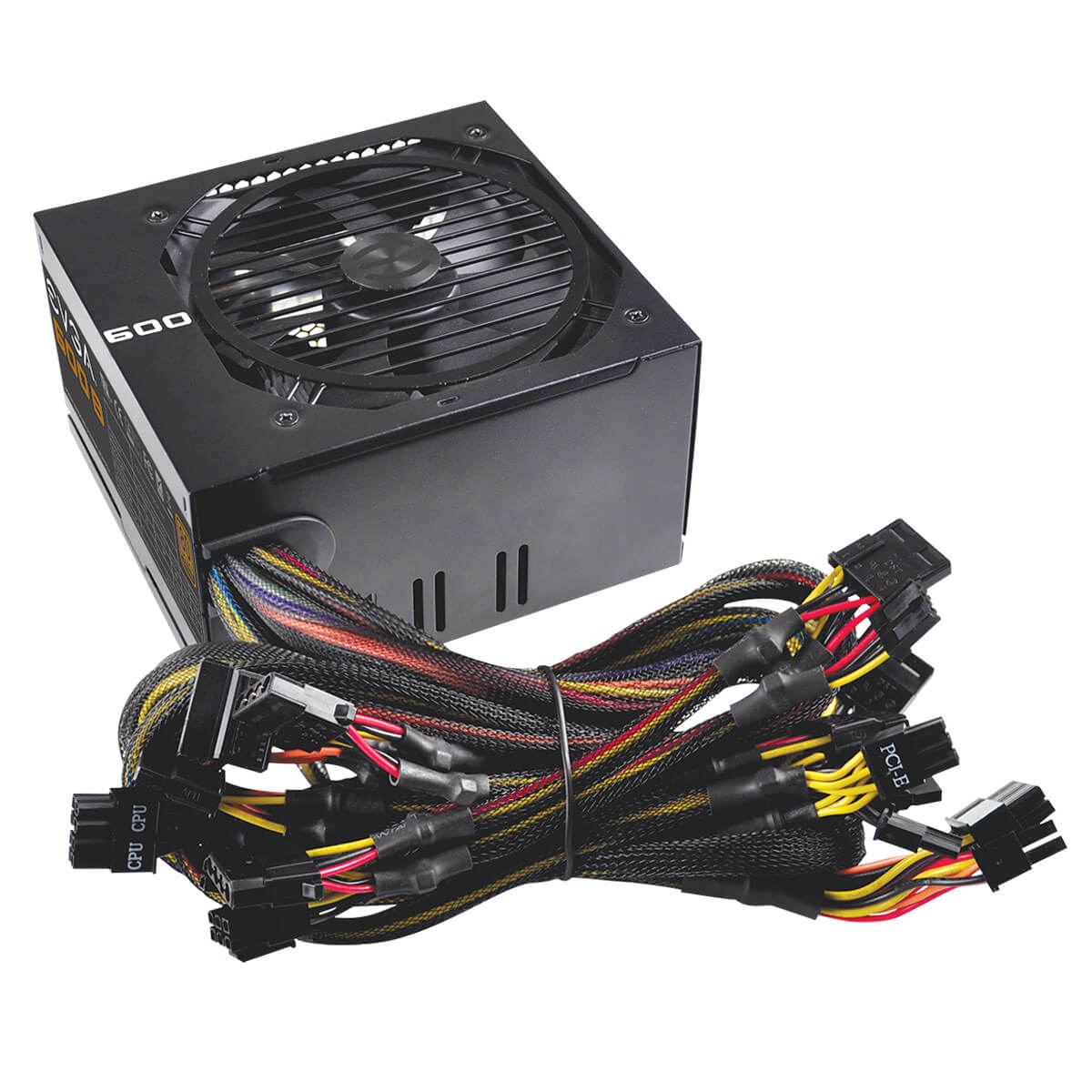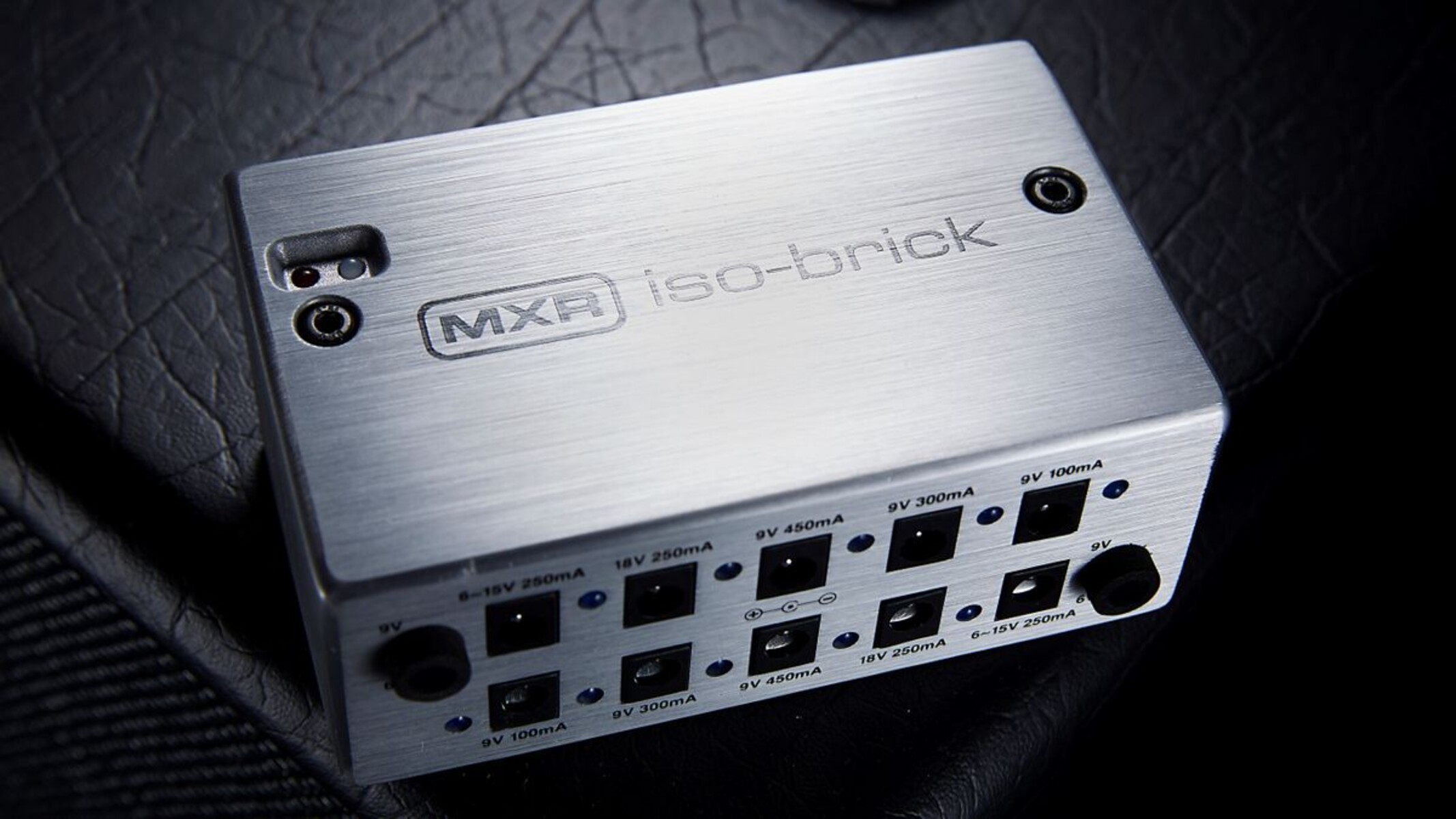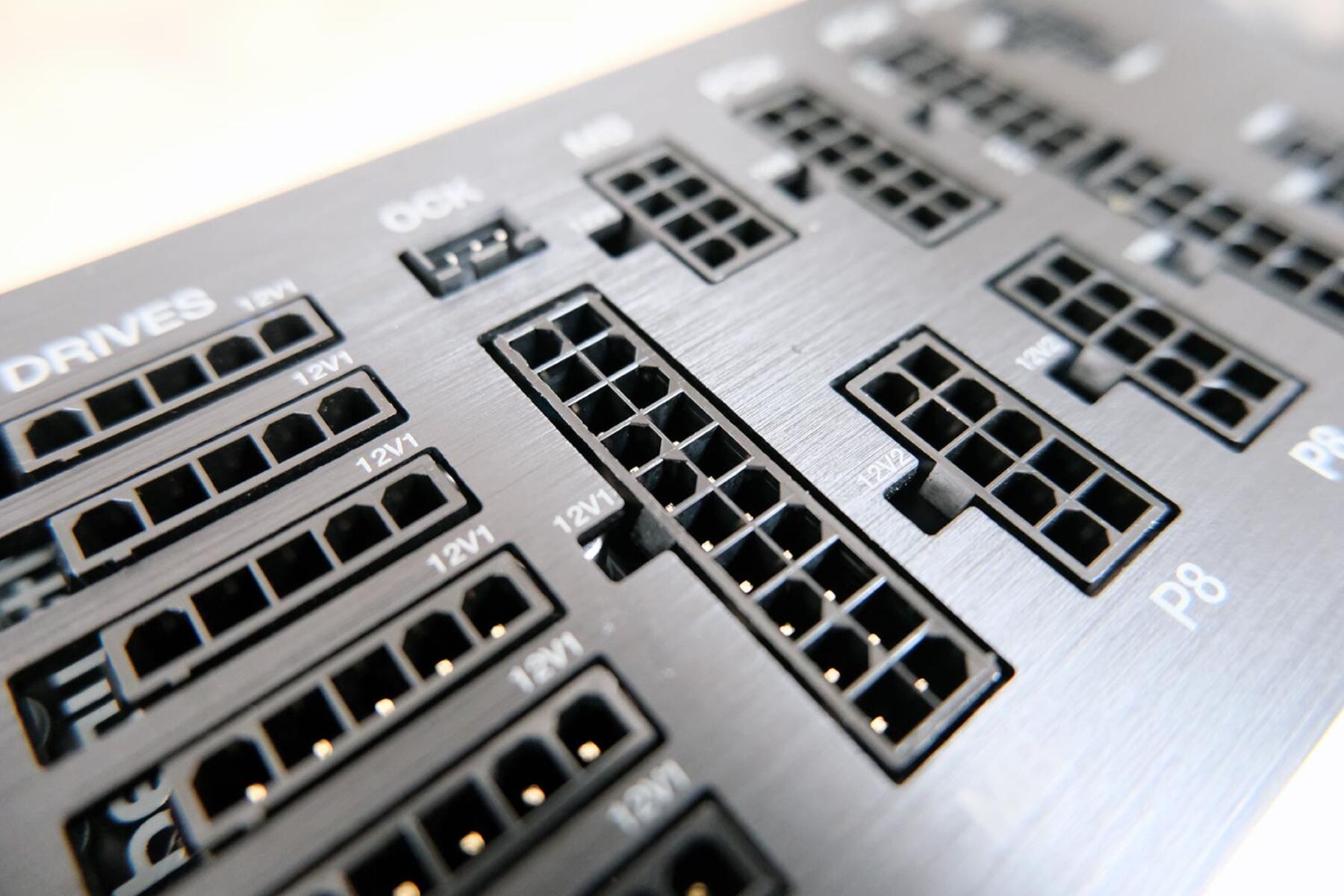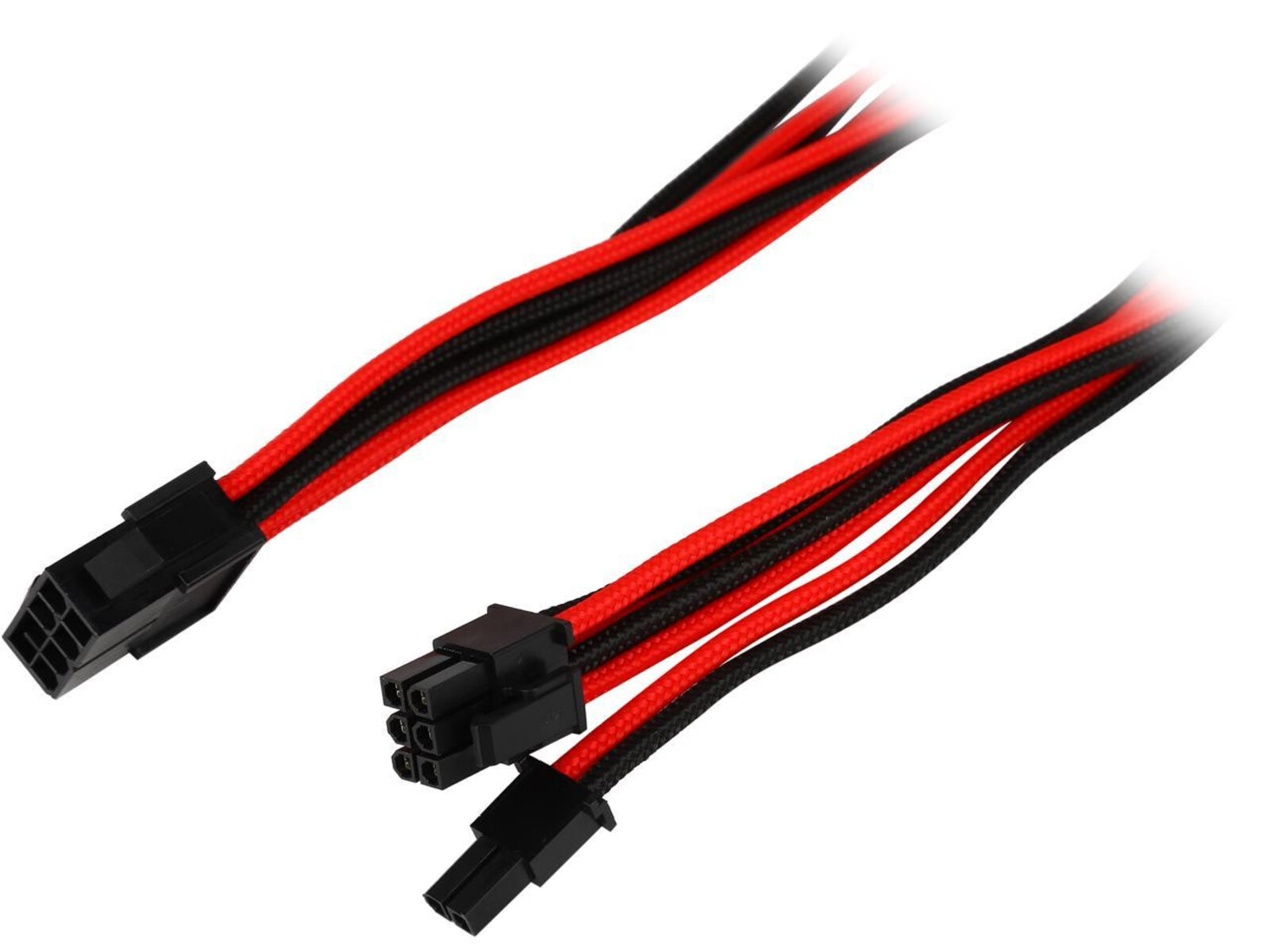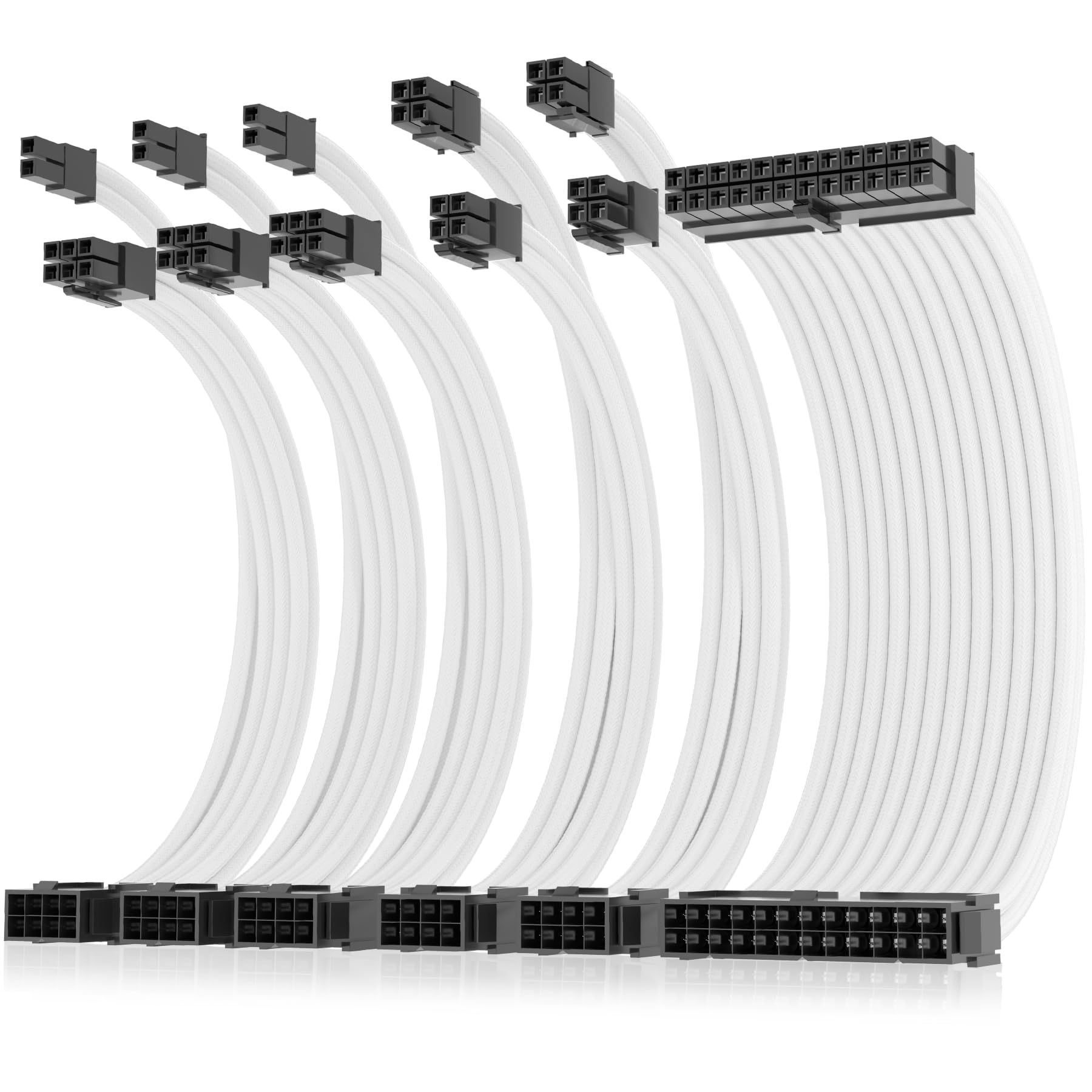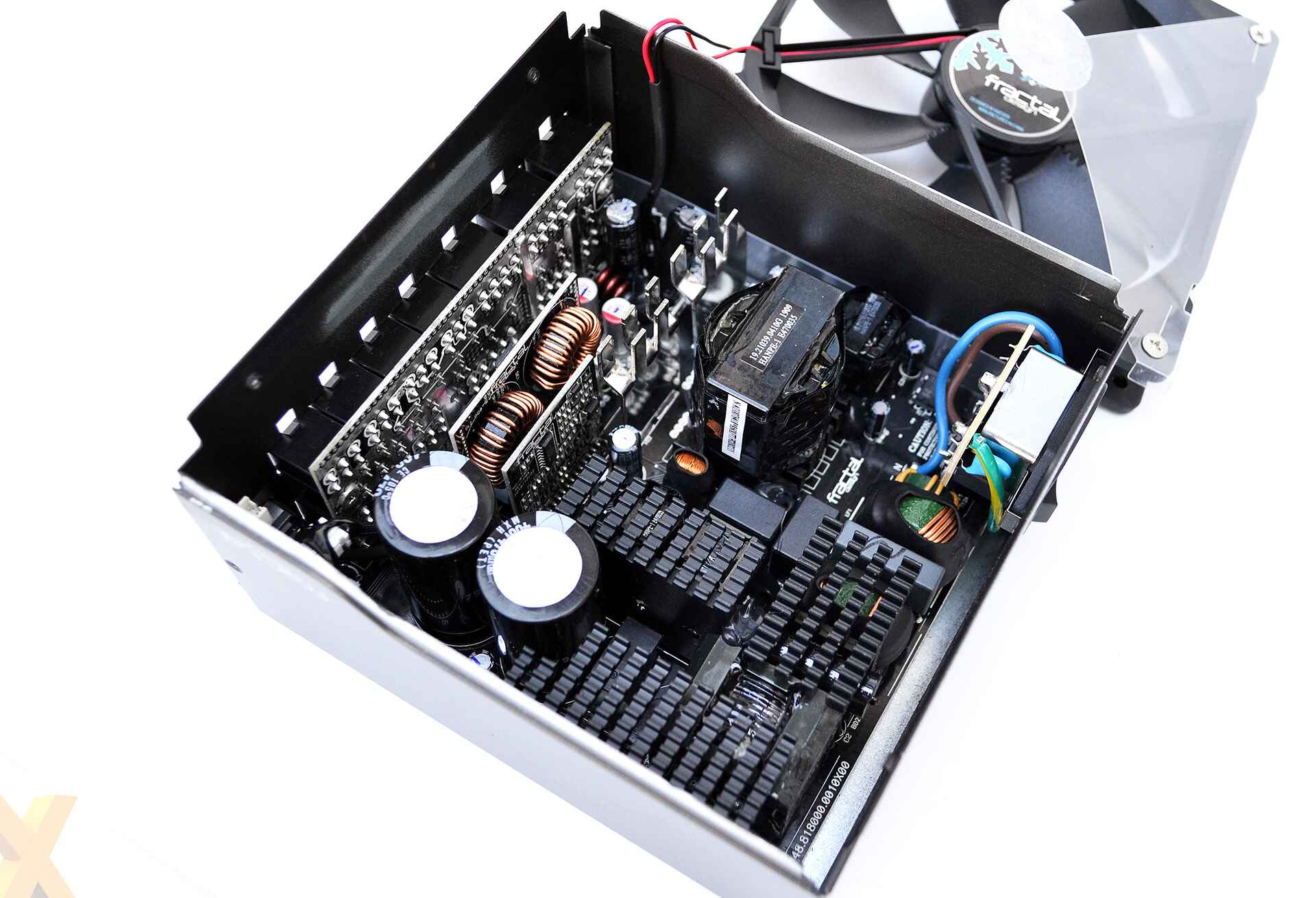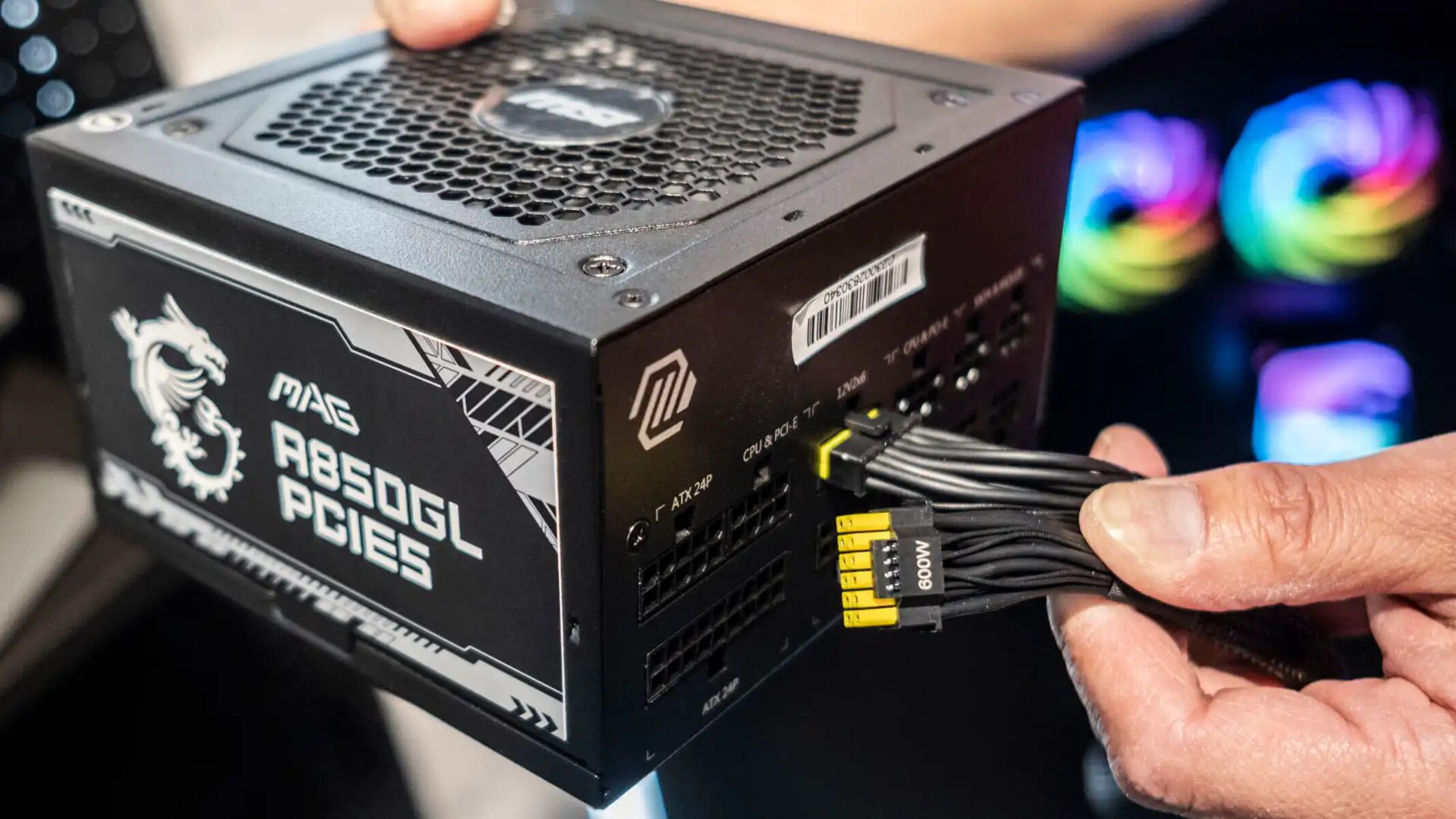Introduction
Welcome to our guide on understanding the Power Supply Unit (PSU) – a critical component of any computer system. In this article, we will take a closer look at what the PSU does, its key components, power output, efficiency, connectors, different types available, considerations when choosing the right PSU, installation and maintenance tips, as well as common issues that users may encounter.
When it comes to building or upgrading a computer, many users tend to focus mainly on high-performance processors, graphics cards, and immense amounts of RAM. While these components are indeed important, the PSU often gets overlooked, despite being the lifeline that powers the entire system.
Think of the PSU as the heart of your computer, responsible for delivering a steady and clean supply of power to all hardware components. Without a reliable and efficient PSU, your computer’s performance could suffer, and it may even lead to system instability or damage to your valuable hardware.
That said, understanding the basics of a PSU and its role in maintaining a stable and efficient power supply is essential for any computer enthusiast or tech-savvy individual. Whether you’re building a gaming rig, a media server, or a professional workstation, knowing how to choose the right PSU and keep it running smoothly will ensure optimal performance and longevity for your system.
In this guide, we will break down the various components that make up a PSU, delve into the different types of PSUs available, and discuss important factors to consider when selecting the right one for your specific needs. We will also touch on installation and maintenance tips to keep your PSU operating at its best while troubleshooting common issues that may arise along the way.
So, if you’re ready to gain a comprehensive understanding of the PSU and its vital role in your computer system, let’s dive into the world of power supplies and unravel the mysteries behind this crucial piece of hardware.
Power Supply Unit (PSU) Basics
The Power Supply Unit (PSU) is a crucial component that converts the electrical power from the outlet into usable power for all the hardware components in your computer. It provides the proper voltage and current required by each component to function optimally. Without a reliable and efficient PSU, your computer’s performance and stability can be compromised.
The PSU’s main function is to take the Alternating Current (AC) power from the wall outlet and convert it into Direct Current (DC) power, which is the type of power required by the internal components of your computer. AC power alternates between positive and negative voltages, while DC power flows in one direction. The conversion process involves rectifying the AC power and then filtering and regulating it to ensure a smooth and steady supply of power.
The PSU is rated in terms of its maximum power output, which is measured in watts (W). It is essential to choose a PSU that can provide enough power to support all the components in your system. Insufficient power can lead to instability and performance issues, while too much power is unnecessary and can result in higher energy consumption.
Another vital consideration is the efficiency of the PSU, which refers to how effectively it converts the AC power from the outlet into DC power with minimal energy loss. The efficiency rating is expressed as a percentage, with higher percentages indicating a more efficient PSU. A highly efficient PSU can reduce energy waste, generate less heat, and ultimately save on electricity bills.
PSUs come in various form factors, with the most common being ATX (Advanced Technology eXtended). The ATX form factor has standardized dimensions, mounting points, and connector placements to ensure compatibility with most desktop computer cases.
Modern PSUs also come equipped with safety features such as overvoltage protection, undervoltage protection, overcurrent protection, short circuit protection, and over-temperature protection. These features safeguard your components from potential damage due to power fluctuations or electrical faults.
Understanding the basics of a PSU is essential when it comes to building or upgrading your computer system. In the following sections, we will explore the internal components of a PSU, discuss power output and efficiency, examine the different connectors and cables used, explore the various types of PSUs available, and provide guidance on choosing the right PSU for your specific needs.
Components of a PSU
Inside a PSU, several key components work together to convert the AC power from the wall outlet into DC power that can be used by your computer’s components. Understanding these components will give you a better grasp of how a PSU operates.
1. Transformer: The transformer is responsible for stepping down the high-voltage AC power from the wall outlet to a lower voltage that is appropriate for your computer system. It consists of primary and secondary windings that control the voltage conversion.
2. Rectifier: The rectifier converts the AC power into a pulsating DC power. This is done through diodes that allow the flow of current in one direction, eliminating the negative voltage of the AC power.
3. Capacitor: Capacitors help smooth out the pulsating DC power produced by the rectifier. They store and discharge energy to maintain a more constant voltage supply.
4. Voltage Regulator: The voltage regulator ensures that the DC output from the rectifier remains within the specified voltage limits. It helps stabilize the voltage and prevent any fluctuations that could negatively affect your components.
5. Fans: To prevent overheating, PSUs often incorporate fans to cool the internal components. These fans help dissipate heat generated by the PSU and keep it operating at a stable temperature.
6. Protection Circuitry: PSUs include various protection features to safeguard against electrical faults. These features include overvoltage protection (OVP), undervoltage protection (UVP), overcurrent protection (OCP), short circuit protection (SCP), and over-temperature protection (OTP). They ensure the safety of your components by shutting down the PSU or cutting off power in case of abnormal or dangerous conditions.
7. Output Connectors: PSUs have multiple output connectors that provide power to different components such as the motherboard, CPU, graphics card, hard drives, and peripherals. The connectors include the main 24-pin ATX connector, additional CPU power connectors (4-pin or 8-pin), SATA power connectors, PCIe power connectors, and more.
By understanding the various components inside a PSU, you can better appreciate the complex processes involved in transforming the incoming AC power into stable and reliable DC power for your computer system. In the next section, we will explore power output and efficiency, two crucial factors to consider when choosing a PSU.
Power Output and Efficiency
Power output and efficiency are important factors to consider when selecting a PSU for your computer system. Understanding these aspects will ensure that your components receive adequate power and that energy is not wasted unnecessarily.
The power output of a PSU is measured in watts (W) and represents the maximum amount of power that the PSU can deliver. It is crucial to choose a PSU that can provide enough power to support all the components in your system, including the CPU, graphics card, hard drives, and any additional peripherals. Insufficient power can result in system instability, crashes, or even damage to your hardware.
When determining the power requirements for your system, consider both the rated power consumption of each component and any potential future upgrades. It is generally advisable to select a PSU with a higher power output than your current needs to allow for future upgrades and ensure system stability.
Efficiency refers to how effectively a PSU can convert the incoming AC power into DC power with minimal energy loss. It is expressed as a percentage and can range from 80% to 95% and above, with higher percentages indicating a more efficient PSU.
A highly efficient PSU not only reduces energy waste but also produces less heat, resulting in lower operating temperatures. This can lead to improved system stability and longer lifespan for your components. Additionally, an efficient PSU can help save on electricity bills, especially if you use your computer for extended periods.
To ensure that you are purchasing a reliable and efficient PSU, look for certifications such as 80 PLUS. The 80 PLUS certification program tests and certifies PSUs based on their efficiency levels. There are different levels of certification, including 80 PLUS, 80 PLUS Bronze, 80 PLUS Silver, 80 PLUS Gold, 80 PLUS Platinum, and 80 PLUS Titanium, with each level representing increasing levels of efficiency.
When choosing a PSU, consider your power requirements and prioritize efficiency. Opting for a higher efficiency PSU may come with a higher price tag, but the long-term benefits justify the investment. A quality PSU with a high power output and efficiency will ensure stable and reliable power delivery to your components, contributing to the overall performance and longevity of your computer system.
In the next section, we will discuss the different connectors and cables that you will encounter when connecting your components to the PSU.
Connectors and Cables
When it comes to connecting your components to the Power Supply Unit (PSU), understanding the different connectors and cables is essential. Each component requires a specific type of connector to receive power from the PSU efficiently.
1. 24-pin ATX Connector: The 24-pin ATX connector is the primary power connector that supplies power to the motherboard. It ensures a stable power supply to the motherboard’s various components, including the CPU, RAM, and other peripherals.
2. CPU Power Connector: For additional power delivery to the CPU, a PSU may have an extra 4-pin or 8-pin CPU power connector. It provides the necessary power for the CPU to operate optimally, especially in high-performance systems.
3. SATA Power Connectors: SATA power connectors are used to provide power to SATA-based storage devices such as hard drives and solid-state drives. They are smaller than the traditional Molex connectors and are the standard connectors for modern storage devices.
4. PCIe Power Connectors: PCIe power connectors are used to provide power to graphics cards and other expansion cards. Depending on the graphics card’s power requirements, you may find 6-pin, 8-pin, or even double 8-pin connectors on the PSU.
5. Peripheral Connectors: These connectors, commonly known as Molex connectors, are used to provide power to various peripherals such as optical drives or case fans. They were widely used in older systems but are now being replaced by SATA power connectors for better compatibility with modern components.
It’s essential to check the power requirements of your components and ensure that your PSU has the necessary connectors to support them. Some PSUs come with modular cables, allowing you to connect only the cables you need and reducing cable clutter inside your system. Modular PSUs offer better cable management and improved airflow, leading to better cooling and overall system performance.
When connecting the cables, ensure that they are securely plugged in and properly aligned with the corresponding connectors. Incorrectly connected or loose cables can cause power delivery issues and potentially damage your components.
Lastly, it’s important to consider the length of the cables. Make sure they are long enough to reach all the necessary components in your system. Cable extensions or aftermarket cables are available if you need to extend the reach of your existing PSU cables.
By understanding the different connectors and cables, you can ensure proper power delivery to your components, reducing the risk of power-related issues and maintaining a stable and efficient computer system. In the next section, we will explore the various types of PSUs available in the market.
Types of PSUs
Power Supply Units (PSUs) come in various types, each designed to meet different needs and specifications. Understanding these different types will help you choose the most suitable PSU for your computer system.
1. ATX PSU: The most common type of PSU is the ATX (Advanced Technology eXtended) PSU. It is designed to fit standard ATX computer cases and has standardized dimensions, mounting points, and connector placements. ATX PSUs are available in different wattages and efficiency levels to accommodate various system requirements.
2. SFX PSU: SFX (Small Form Factor) PSUs are smaller and more compact than ATX PSUs, making them suitable for mini-ITX or small form factor builds. Despite their smaller size, they still provide the necessary power for most components. SFX-L PSUs are slightly larger variants that offer higher wattage capabilities and better cooling.
3. TFX PSU: TFX (Thin Form Factor) PSUs are designed for slim or low-profile cases. They are usually found in small desktop or HTPC (Home Theater PC) systems. TFX PSUs provide sufficient power for basic computing needs and come in a compact size to fit within the limited space of slim cases.
4. WFX PSU: WFX (Wide Form Factor) PSUs are wider and shorter than standard ATX PSUs. They are commonly used in workstations and servers that require higher power output and stability. WFX PSUs often provide additional 8-pin or 4-pin CPU power connectors to support demanding CPUs.
5. Modular PSU: Modular PSUs allow you to connect only the cables you need, reducing cable clutter inside your system. The detachable cables make cable management easier and improve airflow for better cooling. Modular PSUs can be either fully modular, with all cables detachable, or semi-modular, with some essential cables permanently attached.
6. Power Supply Units for Specific Applications: Some PSUs are designed for specific applications, such as gaming or server systems. Gaming PSUs often come with RGB lighting and higher power output to support high-performance components. Server PSUs, on the other hand, are designed for stability and efficiency, providing reliable power for uninterrupted operation.
When choosing a PSU, consider the wattage required by your components, the available space inside your computer case, and any specific needs or preferences you may have. It’s also essential to consider the efficiency rating (such as 80 PLUS) to reduce energy consumption and save on electricity costs.
Now that you have an understanding of the different types of PSUs available, we will move on to the next section, where we will provide guidance on choosing the right PSU for your specific needs.
Choosing the Right PSU for Your Needs
Choosing the right Power Supply Unit (PSU) for your computer system is crucial to ensure stable and reliable performance. Here are some factors to consider when selecting a PSU that meets your specific needs:
1. Power Output: Determine the power requirements of your system by considering the wattage needed by your components. Add up the power consumption of the CPU, graphics card, storage drives, and other peripherals to estimate the total power needed. Choose a PSU that provides sufficient power for your current components and allows for future upgrades.
2. Efficiency Rating: Look for PSUs with higher efficiency ratings, such as 80 PLUS Bronze, Silver, Gold, Platinum, or Titanium. A higher efficiency rating means less energy waste and lower electricity bills. However, keep in mind that higher efficiency ratings often come with a higher price tag.
3. Reliability and Quality: Invest in a reliable and high-quality PSU from reputable brands. A good PSU should have built-in protection features to safeguard against power surges, short circuits, and other electrical faults. Read reviews and check customer feedback to assess the reliability and performance of different PSU models.
4. Connectors and Cables: Ensure that the PSU has the necessary connectors and cables to power your components. Consider the number of SATA, PCIe, and peripheral connectors required by your devices. Modular PSUs provide flexibility by allowing you to connect only the necessary cables, improving cable management and airflow.
5. Form Factor: Choose a PSU that matches the form factor of your computer case. ATX PSUs are the most common and fit standard ATX cases. If you have a small form factor or slim case, opt for SFX or TFX PSUs that are designed to fit these compact cases.
6. Budget: Consider your budget while balancing the quality and features of the PSU. Avoid compromising on quality by purchasing a cheap PSU that may lack stability or protection features. Invest in a PSU that offers a good balance of performance, reliability, and efficiency within your budget range.
7. Warranty: Check the warranty period offered by the PSU manufacturer. A longer warranty period indicates the manufacturer’s confidence in the product’s quality. Ideally, aim for a minimum warranty period of three to five years.
By considering these factors, you can choose a PSU that meets the power requirements of your system, offers reliable and efficient performance, and fits your budget. It’s better to invest in a high-quality PSU that provides stable power and protection for your valuable components. In the next section, we will discuss tips for installing and maintaining your PSU.
Installing and Maintaining a PSU
Installing and maintaining your Power Supply Unit (PSU) properly is essential for the overall performance and longevity of your computer system. Here are some tips on how to install and maintain a PSU:
1. Disconnect the Power: Before installing or working on your PSU, ensure that your computer is powered off and unplugged from the wall outlet. This will prevent any accidental electrical shocks or damage to your components.
2. Choose the Right Location: Install the PSU in a well-ventilated area of your computer case to ensure proper airflow and cooling. Avoid placing the PSU near other heat-generating components, such as the CPU or graphics card.
3. Mounting the PSU: Secure the PSU to the designated mounting area inside the computer case using the provided screws. Ensure that it is securely fixed and not loose. This will prevent vibrations or movements that could potentially damage the PSU or other components.
4. Connectors and Cables: Connect the necessary cables from the PSU to the respective components in your system. Ensure that the connectors are aligned correctly and securely plugged in. Avoid forcing the connectors as this can cause damage. Use cable ties or Velcro straps to manage and organize the cables, improving airflow and reducing clutter.
5. Dust and Dirt Maintenance: Over time, dust and dirt can accumulate inside the PSU and hinder its cooling capabilities. Regularly clean the PSU with compressed air or a soft brush to remove any buildup. Be cautious and avoid touching any internal components while cleaning.
6. Monitor Temperature: Keep an eye on the temperature of your PSU and the surrounding components using monitoring software. If you notice abnormally high temperatures, ensure that the PSU’s intake and exhaust areas are clear of obstructions and consider improving the case’s airflow if necessary.
7. Follow Manufacturer’s Recommendations: Read and follow the manufacturer’s instructions and guidelines for your specific PSU model. They may provide specific maintenance tips or indicate any additional steps to ensure proper installation and operation.
Regularly maintaining your PSU will help ensure optimal performance and increase its lifespan. By following these installation and maintenance tips, you can keep your PSU operating smoothly and avoid potential issues that may arise from improper installation or neglect. In the following section, we will discuss common issues that users may encounter with their PSUs and provide troubleshooting tips.
Common Issues and Troubleshooting Tips
While Power Supply Units (PSUs) are vital components in a computer system, they can encounter certain issues. Understanding these common problems and having troubleshooting strategies can help you resolve PSU-related issues effectively. Here are some common issues and troubleshooting tips:
1. Power Failure or System Shutdown: If your computer suddenly loses power or shuts down randomly, it may indicate a PSU problem. Check if the PSU cables are properly connected, including the 24-pin ATX connector, CPU power connector, and graphics card power connectors. Ensure that the PSU is providing sufficient power for all your components.
2. Overheating and Fan Issues: PSUs have built-in fans to cool their internal components. If you notice excessive heat or fan noise, it could be due to dust accumulation, a faulty fan, or inadequate airflow. Clean the PSU and surrounding areas using compressed air and ensure that the fan is spinning properly. Consider improving case airflow if necessary.
3. Electrical Noise or Coil Whine: Some PSUs may produce electrical noise or coil whine, which can be distracting or annoying. This can occur due to poor quality components or manufacturing defects. If the noise is excessive or unbearable, consider contacting the manufacturer for support or replacing the PSU.
4. Insufficient Power: If your computer experiences instability, freezes, or crashes during demanding tasks or when running multiple components simultaneously, it may indicate an insufficient power supply. Check the power requirements of your components and ensure that your PSU provides enough power to support their needs.
5. Compatibility Issues: Ensure that your PSU is compatible with your motherboard, graphics card, and other components. Check for compatibility regarding connectors, wattage, and power requirements. Incompatible or mismatched PSU connections can result in system instability or failure.
6. Testing for PSU Issues: If you suspect a PSU problem, you can perform a simple test using a PSU tester or a multimeter to check the voltage output. Follow the manufacturer’s instructions or seek guidance from professionals if you are unsure about performing such tests.
7. Professional Assistance: If troubleshooting steps do not resolve the issues or if you experience severe issues like smoke or burning smells, it is crucial to seek professional assistance. Do not attempt to repair or open the PSU yourself, as it can be dangerous and may void any warranty.
It’s important to note that these troubleshooting tips are general in nature, and specific PSU models or brands may have unique requirements or considerations. Refer to the manufacturer’s documentation or contact their support for specific troubleshooting steps and guidance.
By being aware of these common PSU issues and knowing how to troubleshoot them, you can effectively address PSU-related problems and maintain the stability and reliability of your computer system. In the concluding section of this guide, we will summarize the key points discussed and reiterate the importance of selecting and maintaining a reliable PSU for your computer system.
Conclusion
In this comprehensive guide, we explored the world of Power Supply Units (PSUs) and their significance in a computer system. We examined the basics of a PSU, its components, power output, efficiency, connectors, and the different types available.
Choosing the right PSU for your needs is essential, considering factors such as power output, efficiency, reliability, and compatibility. It is crucial to ensure that your PSU can provide sufficient power to all components and operates at an optimal level of efficiency to minimize energy waste and maintain stable performance.
During installation, pay attention to proper cable management, mounting, and ventilation to maximize airflow and prevent overheating. Regular maintenance, including cleaning and monitoring temperature, will further enhance the longevity and performance of your PSU.
We also discussed common PSU issues and offered troubleshooting tips to address power failures, overheating, noise, power insufficiency, compatibility problems, and more. It is important to exercise caution and seek professional assistance when necessary to avoid any potential hazards and protect your computer system.
By understanding the role and importance of a PSU, selecting a reliable and efficient model, and properly installing and maintaining it, you can ensure smoother operation, improved performance, and greater stability for your computer system.
Remember, the PSU is the heart of your computer, providing the vital power that your components rely on. Investing in a high-quality PSU and giving it the attention it deserves will go a long way in maximizing the lifespan and efficiency of your computer system.
We hope that this guide has provided you with valuable insights into the world of PSUs and empowered you to make informed decisions when it comes to selecting, installing, and maintaining this critical component. May your computer system be powered by a reliable and efficient PSU for years to come!







